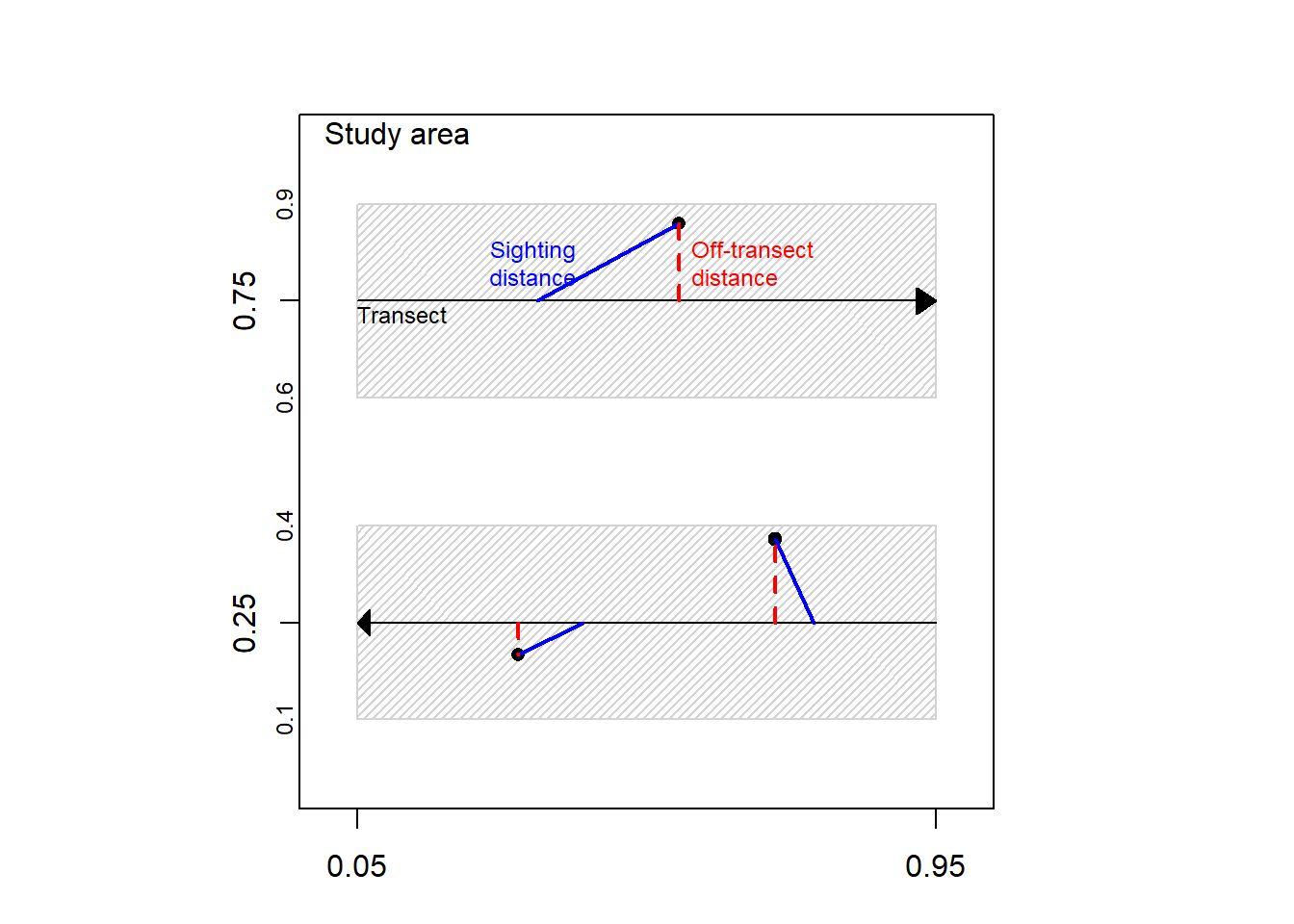The Solution
Measure Distances and Estimate a Distance Function
Distance-sampling studies essentially correct for the “missing” targets that should have been detected far from the transects.
To do this, distance-sampling studies essentially make two assumptions so that an effective sampling area can be computed. The effective area sampled is then used to compute the corrected density estimates.
To estimate the effectively sampled area, assumptions and additional information about target locations relative to observers are required. Distance-sampling studies not only collected basic target counts and transect lengths, they also collect perpendicular distances between sighted targets and the search route (Figure 1). Collection of perpendicular distances, from sampling route to target, is what gives distance-sampling its name and is the method’s distinguishing feature. These off-transect distances will be used to actually estimate the decline in detection probabilities, but only after making two key assumptions.

